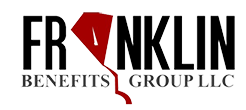‘Family Glitch’ Fixed by Regulations That Took Effect for 2023

Thanks to new regulations that took effect Jan. 1, it will be easier for dependents of an employee with employer-sponsored family health coverage to seek out coverage and subsidies on the Marketplace if they are in a plan that is deemed unaffordable under the Affordable Care Act.
The new rules, issued by the Department of Treasury and the IRS, are aimed at fixing what’s become known as the “family glitch,” which is tied to the affordability test of employer-sponsored coverage.
The ACA affordability threshold for employer-sponsored coverage is 9.12% of income for 2023, meaning that if an employee is spending more than that for their portion of the premium, the coverage would be deemed unaffordable and they would be eligible to seek out coverage on an exchange and qualify for subsidies.
Under the family glitch, affordability of employer-sponsored coverage for a family member of an employee was determined by the affordability test for self-only coverage. And because of ACA rules, even if the family coverage was more than 9.12% of household income for the worker’s family members, they would be ineligible for premium credits (or subsidized coverage) on the government-run exchange.
Some 5.1 million individuals are affected by the family glitch, according to the Kaiser Family Foundation. It estimates that 85% of them in 2022 were enrolled in employer-sponsored plans and paying more than they would if they qualified for subsidies on the exchange.
Another study estimated that these individuals could be spending on average 15.8% of their income on their employer-sponsored coverage.
Example of the family glitch:
An employer pays 100% of the $7,500 premium for an employee’s self-only coverage, but doesn’t pay anything towards the individual’s family members’ coverage, which is an additional $8,500 per year.
As a result, the worker’s dependents would be considered to be enrolled in affordable employer-sponsored coverage, which would prevent them from qualifying for tax credits on the exchange.
The new rules
Under the new rules, the worker’s required premium contributions for self-only and family coverage would be compared to the affordability threshold of 9.12% of their household income.
If the employer offers multiple plans, the affordability test is applied to the lowest-cost plan, regardless of if the employee chooses a plan that costs them more than 9.12% of household income.
If the cost of self-only coverage is considered affordable, but the family coverage not, the employee would not be eligible to apply for subsidized coverage on an exchange, but their dependents would be.
In your communications with your staff, it may be a good idea to let them know of this new rule as it could allow some of them with family coverage to secure subsidies for their dependents on the Marketplace and pay less in premium for the coverage.
For more information please contact Franklin Benefits Group, LLC
